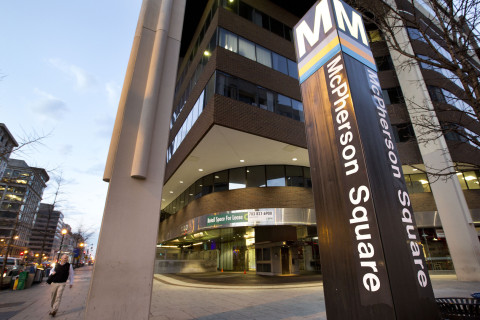WASHINGTON — As more Metro trains run red signals, raising serious safety concerns, Metro is focused on new training for train operators since significant technology upgrades are a long way off.
“The idea that train operators run red lights is incomprehensible to me. As a driver, I have to obey red light signals,” Metro Board member Michael Goldman, of Maryland, said Thursday at a special board safety meeting.
Chief Safety Officer Pat Lavin said he shared concerns about trains being able to run at up to 12 mph after passing red signals under the current manual operations. That is how a Red Line train leaving Glenmont was able to nearly hit two workers on the tracks who dove out of the way. Their shouts were all that got the train operator, who was rushing to a break, to stop the train before a head-on collision last month.
Eight-car Red Line trains are now able to run in automatic operation, but no other trains have returned to the smoother computer-based operations since the fatal 2009 Red Line crash, which was largely blamed on a technology failure tied to one train not being detected on the tracks.
Metro expects an update in September or October on when six-car Red Line trains might return to automatic operations.
In the meantime, train operators are getting new refreshers on signals and other key points along their routes, following Federal Transit Administration findings on dozens of stop-signal violations over the last few years.
In some cases, train operators are sitting down to watch a video recording of their usual route taken by Metro’s automated track inspection vehicle.
Outside investigators are also considering other changes including making signals more easily visible.
Lavin said the system in New York City, where he worked before joining Metro, actually has more red-signal violations, but that they pose less of a risk there because trains are automatically stopped.
He met Wednesday with Metro engineers to discuss a new electronic solution that could eventually provide the same protections against a head-on collision at Metro.
“We’re looking at a car-borne solution where stop means stop, so basically you would have to take two additional actions to move in ‘stop and proceed’. It would take a software solution, it would have to have a hazard analysis done, but essentially, before you could move in a ‘stop and proceed’ mode, you’d have to toggle a switch back and forth, push a button, and then attempt to proceed,” Lavin said.
“This is in the infancy of conception, but it is something we are looking at,” he explained.
In addition to the actual development of the system, it would have to be analyzed to be sure it did not introduce other safety risks before it could be implemented.
“It’s a human performance issue that needs to get addressed, and there’s not a magic bullet that you address all of them in one swoop. It’s technology, it’s training, it’s fatigue, so you have to take a holistic approach,” Lavin said.
Another new leader at Metro who comes from the New York system is Chief Operating Officer Joseph Leader.
“The people on our trains, the people on our buses, they should be your family, that’s how you should look at it,” he said.
“We have a contract with them when they swipe in to get them home safely, and I’m hoping that in the next few months, the next few years we can start to turn that culture and make sure people are looking as they come to work every day toward that goal and model: that if you can’t have your family ride our system, then, you know, maybe you shouldn’t be working here,” said Leader.






